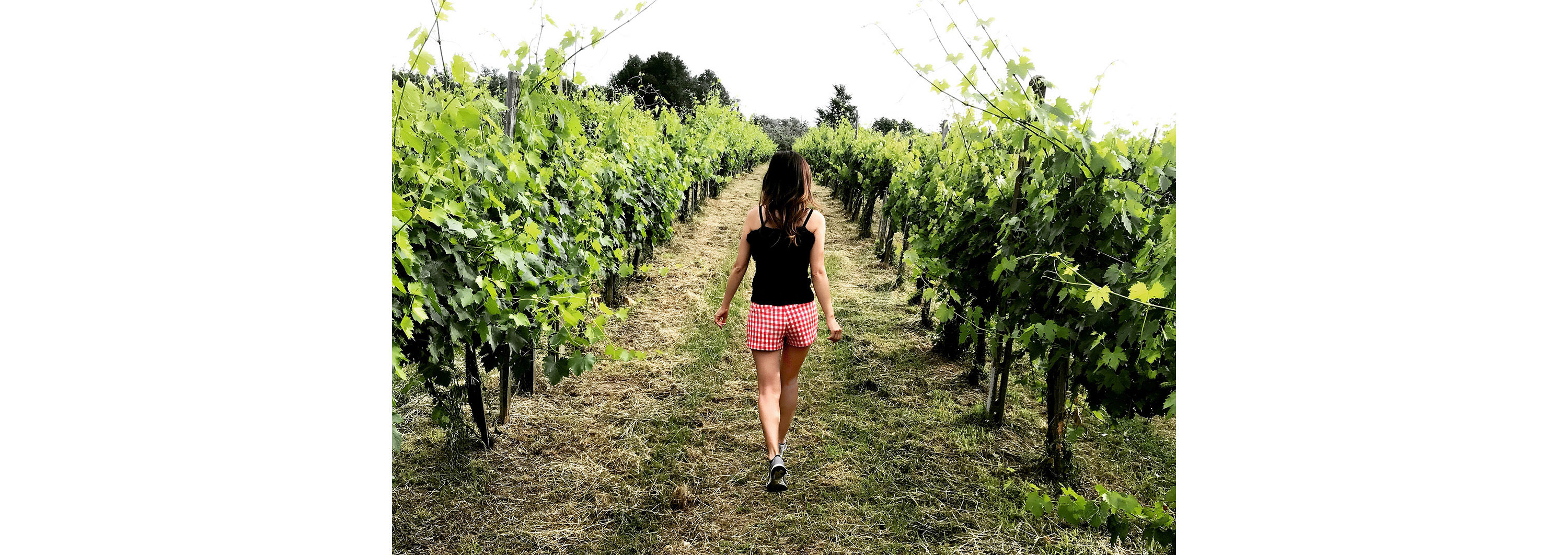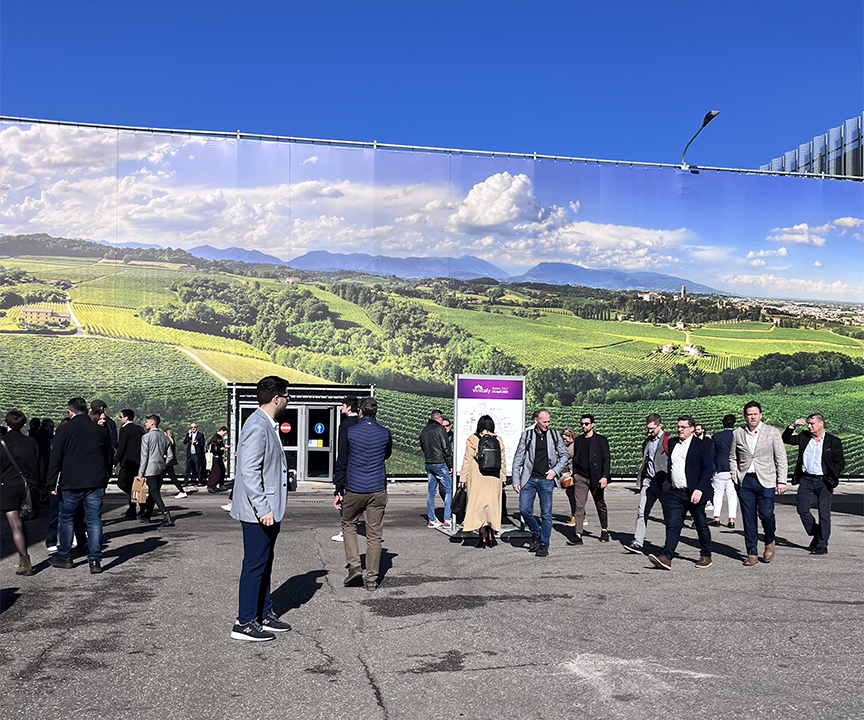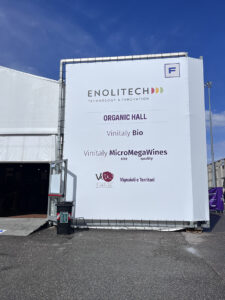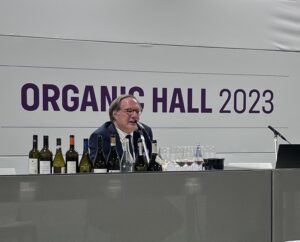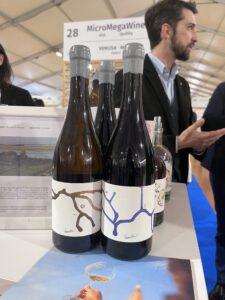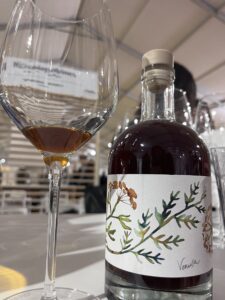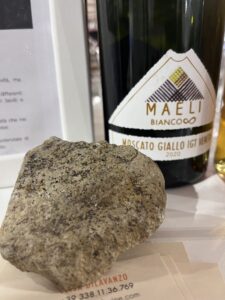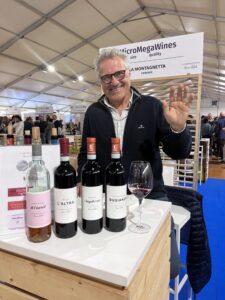In Verona, Italy, the largest international exposition featuring 4,000 companies from 30 countries is magnificently daunting. And as in the case of David and Goliath, smaller producers in the battle of the giants can result in a win with wines that are just as amazing and sometimes even more storied than the larger ones. Made possible at Vinitaly for the second year, a focused and organized effort to showcase these tiny (micro) wineries of high-quality (mega) wines was found in a thematic area called Micro Mega Wines.
Located in the organic hall at Vinitaly, Micro Mega Wines, curated by multi-award-winning author, educator, and authority in Italian grapes and wines, Ian D’Agata, showcased some (41) of Italy’s smallest high-quality estates – each devoted to unique grape varieties and terroirs and characterized by small volume productions.
Wines made with grapes such as Albarossa and Freisa, Tazzelenghe, and Zibibbo came from up and down Italy’s boot, Sardinia, Sicily … and even small islands in the Venetian Lagoon. The following is a snapshot of a few wine producers:
Not far from Verona, the Venissa estate, located on the island of Mazzorbo, produces a wine that showcases the uniquely Venetian Dorona grape variety. A single hectare of this variety was established within an ancient walled vineyard on the Venissa property. Matteo Bisol and his family gave this golden grape a second life and have been proactive in protecting the authenticity of native Venice through the preservation and enhancement of traditional practices. Venusa Bianco Veneto IGT 2019 is a gorgeous wine of yellow fruit and flowers. The wine is fresh and lively, and the salinity from contact with the salty water is prevalent in both the aroma and flavor, painting a sensorial picture of its place. Venissa also makes a vermouth from wild marine artemisia and fennel harvested from shoals that emerge and submerge with the tide.
On the mainland, between the Venetian lagoon and the Dolomites, Moscato Gialla wines are made by Eliza Dilavanzo of Maeli. Not to be confused with the famous Moscato Bianco grape or Muscat of Alexandria (Zibbibo) from the vast, vast world of Muscats, Moscato Gialla is different. Maeli’s Muscat, too, is a special clone called Muscat Fior D’Arancio from the Euganean Hills of volcanic origin. Nobody else in Italy makes as much Moscato Giallo as Maeli, let alone a fizzy style. Maeli’s “Dili” 2022 Moscato Giallo Frizzante col fondo Veneto IGT is a fruity burst of grapefruit pét-nat and a touch creamier than Moscato Bianco, but as one would expect from a Muscat, aromatic.
From the Piedmont region, La Montagnetta’s Domenico (Mimmo) Capello a.k.a. “Mr. Freisa” makes an array of delicious Freisa (Nebbiolo’s closest relative) from rosé, to sparkling, to amphora and classical dry still wines. The “L’Altra” is vinified in cement, resulting in a pure and focused crunchy, strawberry-cherry punch.
At one time, Freisa was prevalent in nearly all red blends from Piedmont. Often made sweet and fizzy, farmers favored Freisa for its rusticity, resilience, and vigor. Because of these attributes, however, the grapes were planted on marginal sites and eventually became a target of criticism, in addition to being eclipsed by more popular grapes, namely Barbera, Dolcetto, and Nebbiolo.
Domenico is a great ambassador of this indigenous variety. Demonstrating its diversity puts a punctuation on this grape’s merits. Read more about Freisa HERE.
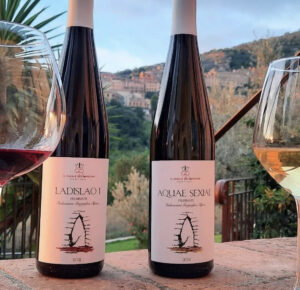
And finally, from Lazio, twenty-five year old Cristofer Di Ruzza is a chef who decided to start estate bottling from his family’s old vines of forgotten grapes such as Lecinaro, Campolongo, and Maturano. He presented his very first vintage at Micro Mega Wines this year. Il Casale della Regina 2021 Lecinaro Frusinate IGT is a red wine made from co-planted grapes of Lecinaro and Cesanese. This inaugural vintage was a promising example of a modern, fresh wine from Lazio – rustic, crunchy, and crispy red berries with great acidity. And Di Ruzza’s story is the true embodiment of what Micro Mega Wines is all about.
